ISSN ONLINE(2278-8875) PRINT (2320-3765)
ISSN ONLINE(2278-8875) PRINT (2320-3765)
Dr.Shaik Rafi kiran1 and J. Santha Kumar2
|
| Related article at Pubmed, Scholar Google |
Visit for more related articles at International Journal of Advanced Research in Electrical, Electronics and Instrumentation Engineering
STATCOM is a FACTS controller that is used in power systems to regulate the line voltage, enhance the power transmission capacity and extend the transient stability margin. STATCOM is conventionally realized by a voltage-source converter; however, being a current injection device, its performance can be improved when realized by a current-source converter (CSC) that can generate a controllable current directly at its output terminals. In this paper, a STATCOM based on the current- source converter topology is proposed. But the best constant values for pole placement controller's parameters are laboriously obtained through trial and error, although time consuming. So the genetic algorithm (GA) is employed to find the best values for pole placement controller's parameters in a very short time. These methods are tested in MATLAB, and their results are obtained. The simulation results show an improvement in input output response of CSC-STATCOM.
Keywords |
| CSC, FACTs, GA, Pole placement, STATCOM. |
INTRODUCTION |
| In an important member of the FACTS controllers’ family, Static Synchronous Compensator (STATCOM) has been at the centre of attention. STATCOM is a shunt-connected device that is used to provide reactive power compensation to a transmission line. Through regulation of the line voltage at the point of connection, STATCOM can enhance the power transmission capability and thus extend the steady-state stability limit. In 1991, the first STATCOM scaled model (80 MVAR) was designed and built at the Westinghouse Science and Technology Centre, which proved that STATCOM can increase system damping, power system stabilization, and power transmission limits. In 1995 the first high power STATCOM in the United States (100 MVAR) was commissioned at the Sullivan substation of the Tennessee Valley Authority (TVA) for transmission line compensation. The project was jointly sponsored by the Electric Research Institute and TVA, and designed and manufactured by the Westinghouse Electric Corporation. This project showed that the STATCOM is a versatile piece of equipment, with outstanding dynamic capability, that will find increased application in power systems. In 1996, the National Grid Company of England and Wales decided to design dynamic reactive compensation equipment with inclusion of a STATCOM of 150 MVR range. Moreover, much research confirms several advantages of STATCOM. |
| These advantages include: |
| • Size, weight, and cost reduction |
| • Equality of lagging and leading output |
| • Precise and continuous reactive power control with fast response Possible active harmonic filter capability |
| STATCOM can also be used to introduce damping during power system transients and thus extend the transient stability margin. Theoretically, FACTS controllers can be realized by either a voltage-source converter (VSC) or a current-source converter (CSC). In this paper controller designing uses pole placement method, with assistance of genetic algorithm. The new method is tested in Matlab, and their results are obtained. |
| In this paper genetic algorithm based pole placement method can be used for the control of csc based STATCOM. Basic principle & CSC based STATCOM circuit modelling is presented in section II. Pole placement controller design with simulation results in detailed in section III Simulation results with assistance of genetic algorithm are shown in Section IV. Finally, conclusion is section V this paper. |
CSC BASED STATCOM MODELING |
| The CSC based STATCOM design controllers; the state space equations from the CSC-STATCOM circuit must be introduced. |
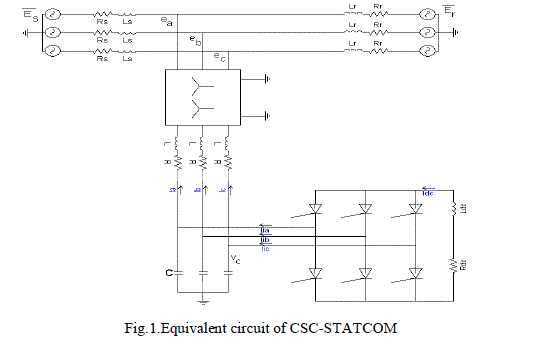 |
| In fig .1 the ia, ib, ic are line current, the va, vb, vc are voltages across the filter capacitors. The ea, eb, ec are line voltages. Ldc is dc-side current. RdC is converter switching and conduction losses. Ldc smoothing inductor and L is the inductance of the line reactor. R is the resistance of the line reactor. |
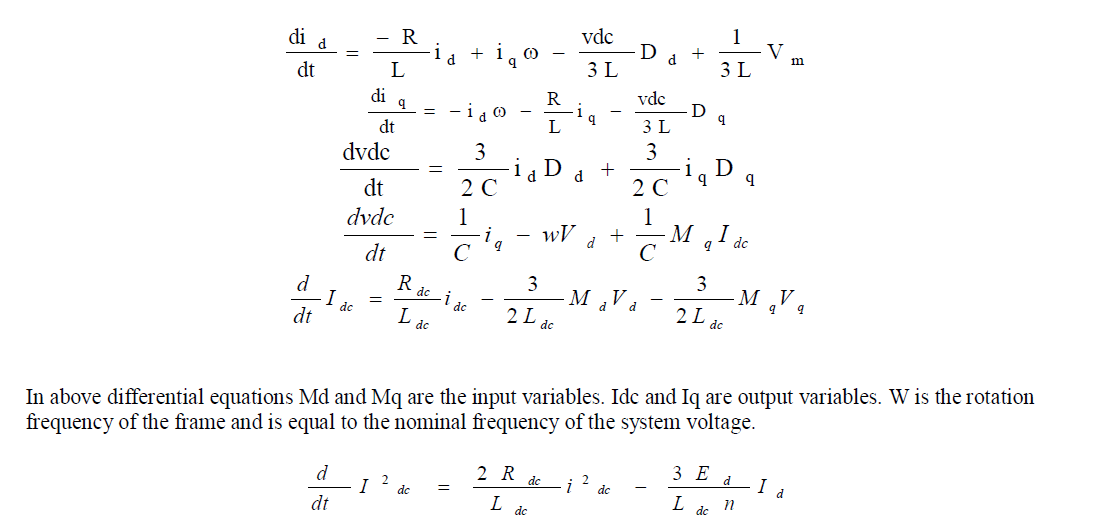 |
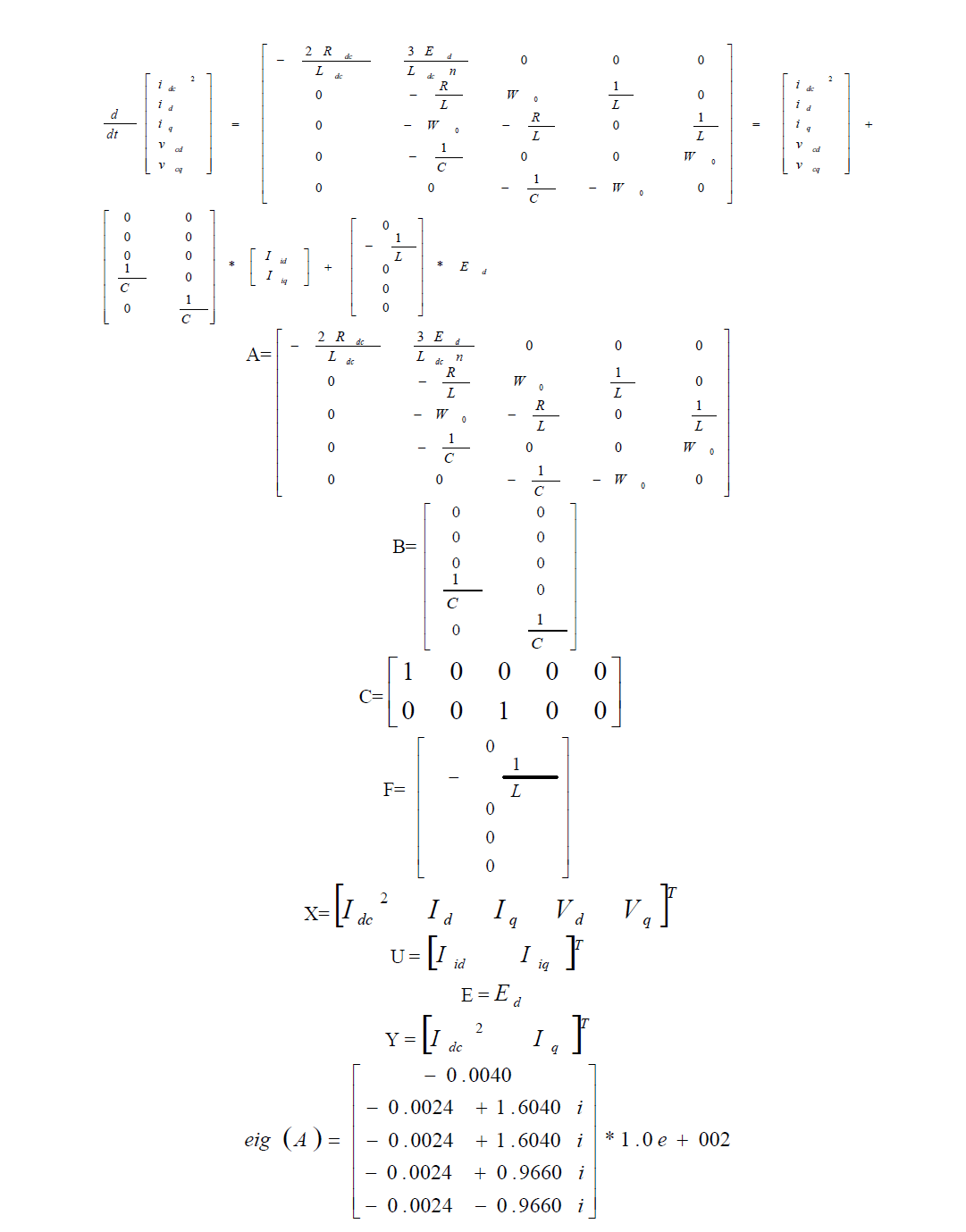 |
| Since all the Eigen values of the system are on the left hand of the plane, the system is stable. In the open loop system response shown in Fig. 2, 3, 4, there are large oscillations in id and iq during 0.0-1.5 sec and Idc 2 is not constant. |
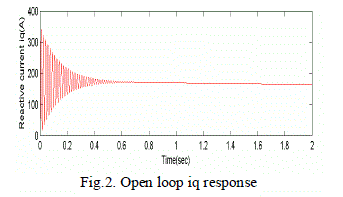 |
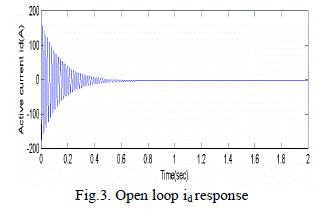 |
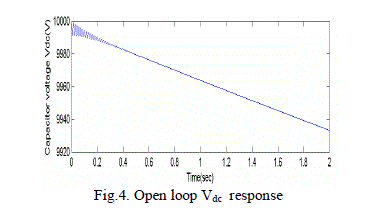 |
DESIGN OF POLE PLACEMENT CONTROLLER |
| A full state feedback controller based on the pole assignment method can improve the system characteristics such that the closed loop system performance will satisfy the requirement criteria. |
| For a given system: |
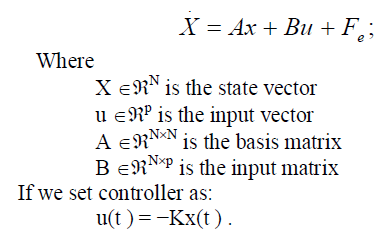 |
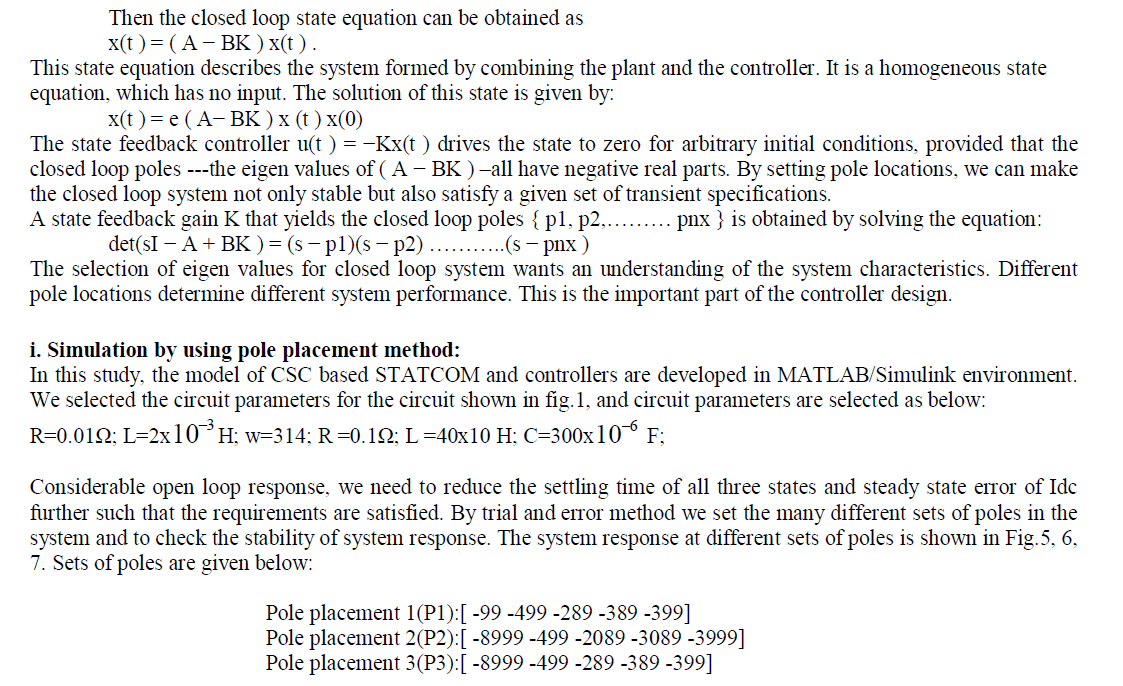 |
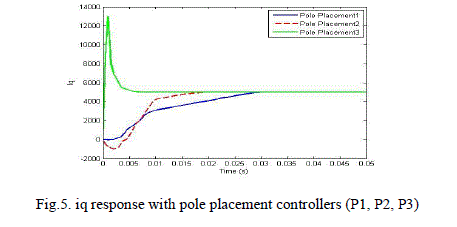 |
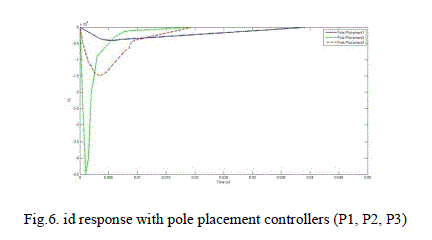 |
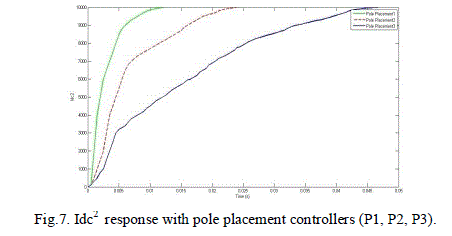 |
GENETIC ALGORITHM IN POLE PLACEMENT METHOD |
| The use of natural evolution method for the optimization of control system has been of interest for the researchers since along time. The control system parameters are considered as the genes of one chromosome and a random population is generated from some of this chromosomes. Then the object function of control system using each chromosome parents is calculated, and then based on population upgrading methods such as roulette wheel mechanism the best chromosome with optimum objective function is generated. |
| Trial and error method is time consuming. So using the genetic algorithm, the state feedback gain with the desired eigen structure in the pole placement method can be obtained. By the GA, the value of K is optimized. The control system objective function is as follows |
 |
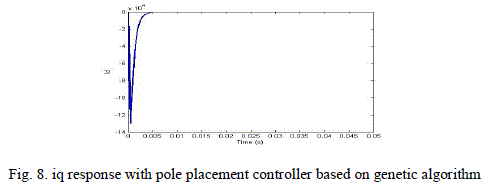 |
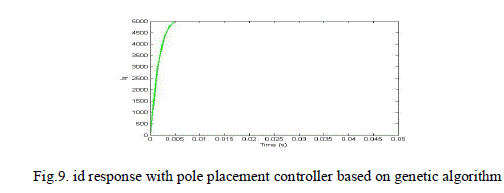 |
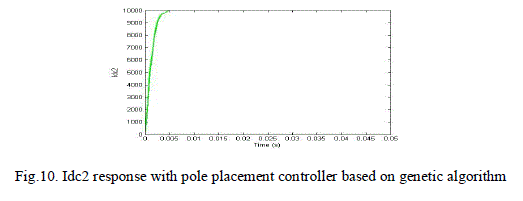 |
CONCLUSIONS |
| In this paper, the CSC based STATCOM is controlled by the pole placement. But the best constant values for pole placement controller's parameters are laboriously obtained through trial and error, although time consuming. So the genetic algorithm (GA) is employed to find the best values for pole placement controller's parameters in a very short time. These methods are tested in MATLAB, and their results are obtained. Finally the pole placement controller with GA performs better in terms of tr, ts, Mp in comparison to pole placement without GA for the open-loop response of CSC based STATCOM and CSC based STATCOM can be regarded as an alternative FACTs device to that of VSC based STATCOM. |
References |
|